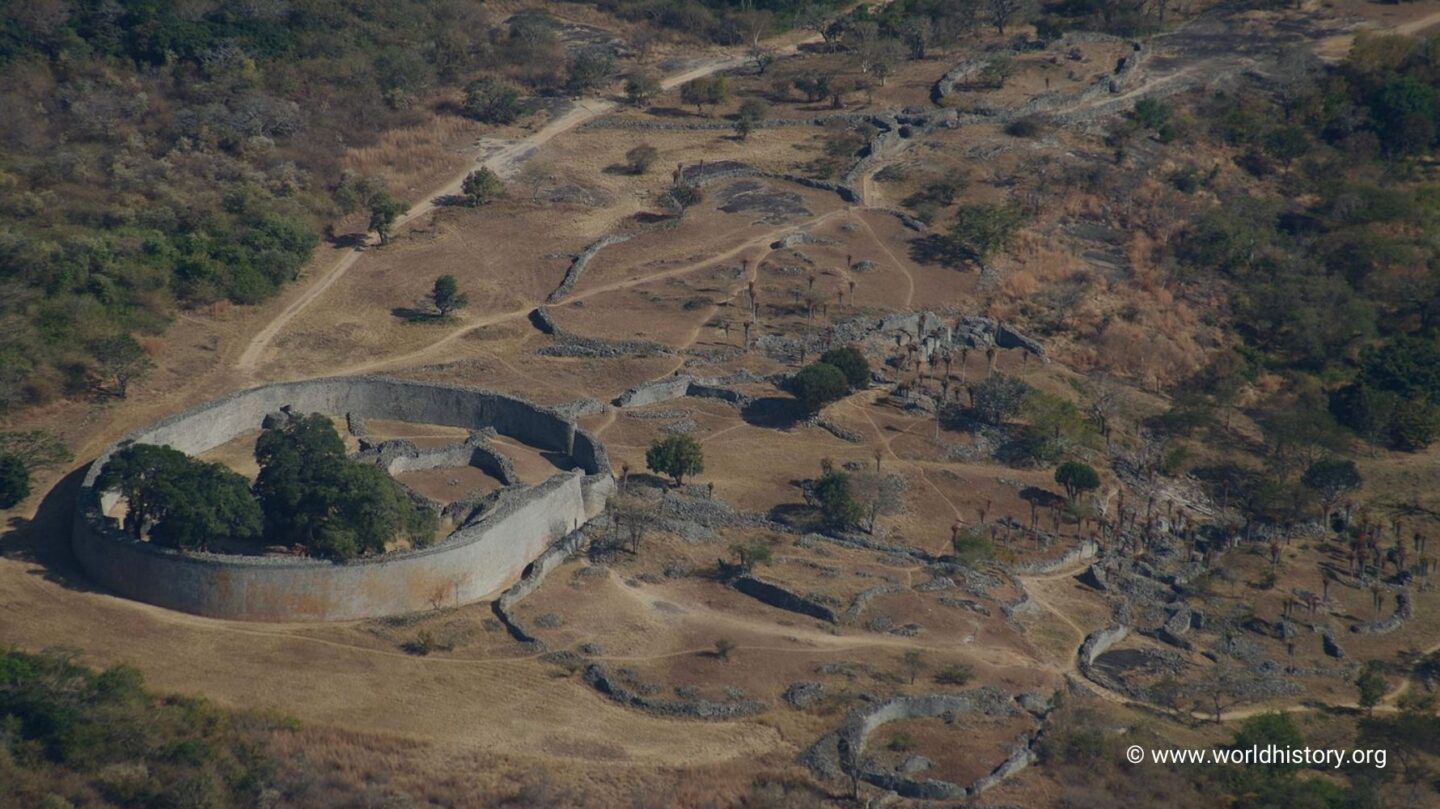The Rise of a Stone Kingdom
Great Zimbabwe, located in present-day Zimbabwe, was the capital of a powerful kingdom that thrived between the 11th and 15th centuries. This ancient city, whose name means “stone houses” in the Shona language, is renowned for its impressive stone structures, which stand as a testament to the ingenuity and organizational skills of its builders.
Covering an area of nearly 7 square kilometers, Great Zimbabwe was once home to a thriving population of up to 18,000 people. Its strategic location allowed it to control trade routes between inland Africa and coastal trading cities along the Indian Ocean, contributing to its wealth and influence.
Architectural Marvels of Great Zimbabwe
Great Zimbabwe is most famous for its monumental stone architecture, particularly the Great Enclosure, which remains one of the largest ancient stone structures in sub-Saharan Africa. The enclosure features towering walls, some reaching heights of over 11 meters, constructed without the use of mortar. This dry-stone technique showcases the remarkable engineering skills of its builders.
Another significant feature is the Hill Complex, a fortified area perched on a granite hill. Thought to have been a royal or ceremonial center, the Hill Complex offers panoramic views of the surrounding landscape. The city also included numerous smaller enclosures and living spaces, reflecting a highly organized society.
The stonework of Great Zimbabwe is not only a feat of construction but also a symbol of power and prestige, highlighting the city’s role as a center of authority and culture.
A Hub of Trade and Wealth
Great Zimbabwe’s prosperity was largely based on its control of trade. The city was a key player in the gold trade, with vast deposits of the precious metal mined in the surrounding regions. Gold, along with ivory and other valuable goods, was exported to coastal cities such as Kilwa and Sofala, which were part of the Swahili trading network.
Through these trade links, Great Zimbabwe established connections with distant civilizations, including those in the Middle East, India, and China. Archaeological excavations have uncovered artifacts such as Chinese porcelain and Persian glass, providing evidence of the city’s far-reaching economic influence.
The Decline of Great Zimbabwe
By the 15th century, Great Zimbabwe began to decline. The reasons for its fall are still debated, but several factors likely contributed. Environmental degradation, including deforestation and overgrazing, may have depleted the resources necessary to sustain its large population. Shifts in trade routes, which bypassed the city in favor of other emerging centers, also weakened its economic power.
The rise of the Mutapa Kingdom, which became the new regional power, further eroded Great Zimbabwe’s significance. By the 16th century, the city had been largely abandoned, leaving its stone ruins to be reclaimed by nature.
Rediscovery and Preservation
Great Zimbabwe was rediscovered by European explorers in the late 19th century, but early interpretations of the site were clouded by colonial biases, with some attributing its construction to non-African civilizations. Today, it is widely recognized as the product of indigenous African ingenuity and serves as a powerful symbol of African heritage and pride.
In 1986, Great Zimbabwe was designated a UNESCO World Heritage Site, ensuring its preservation for future generations. Ongoing archaeological research continues to shed light on the city’s history and its role in shaping the region.
A Legacy of Power and Innovation
Great Zimbabwe remains an enduring symbol of Africa’s rich history and the achievements of its ancient civilizations. Its stone structures stand as a testament to the creativity, resilience, and ambition of the people who built it. As one of the most remarkable historical sites in Africa, Great Zimbabwe continues to inspire and educate, reminding us of the continent’s vibrant past and its contributions to human civilization.
